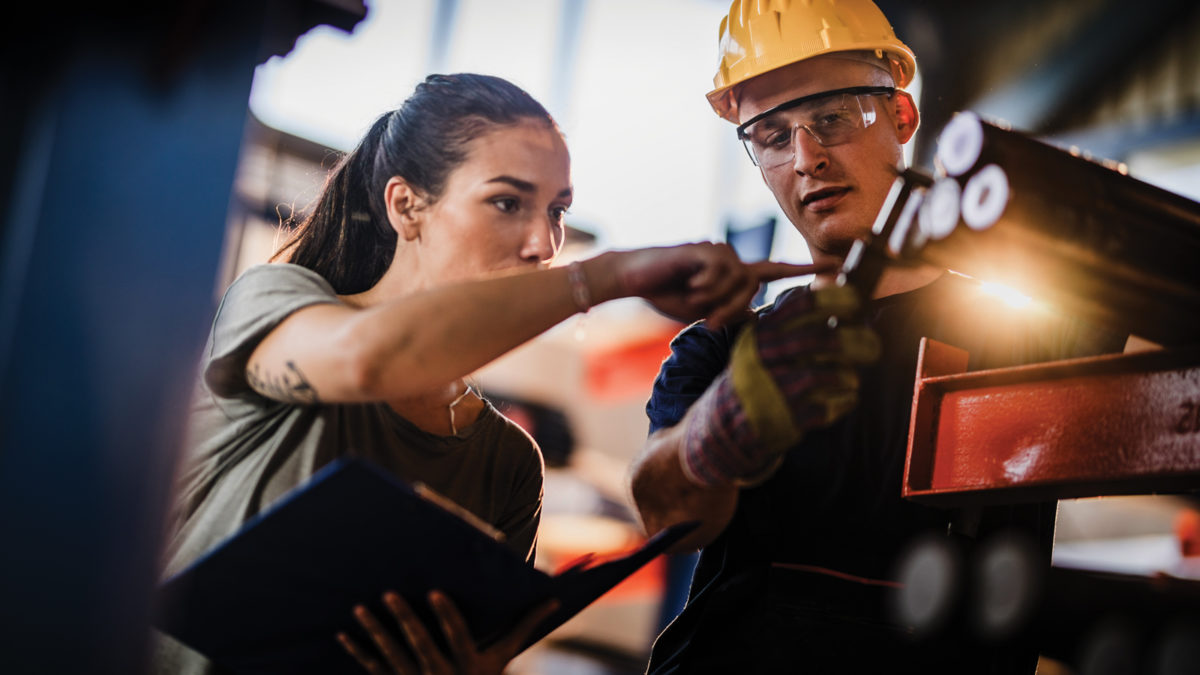
Student Inventions
May 2020

For the last quarter century, I’ve been involved with the Invention Convention program for students between kindergarten and eighth grade. We ask them to solve a problem in a new way. Some 20,000 youngsters have participated in the student invention program, creating invention models from mousetraps to ozone layer repair kits.
Life is Messy
One kindergarten student lamented the lack of mud during hot summer days, mud being the main ingredient in mud pies, as it happens. So the 5-year-old inventor mounted an inverted bottle of water and one filled with dirt onto the bathroom wall. Now he can concoct a batch of mud in the comfort of his parents’ bathtub.
Another student was faced with the problem of walking his dog every afternoon. He invented a virtual reality helmet for his pet that can now walk around the living room imagining it is encountering fields, flowers, and, of course, fire hydrants. Perhaps the inventor, like Alfred Nobel, can be excused for not anticipating unintended consequences of the invention.
The Devil is in the Details
The youngest children, having less science and engineering education and being less worldly, tend to ignore the details that would make their inventions enabling, as patent examiners are fond of saying.
The youngest kids often invent machines consisting of push buttons: “a button to make me pretty,” “a button to mow my lawn,” or “a button to groom my horse.” One second-grader invented a “Wishing Pill” to be ingested before making a wish. Once the pill is swallowed, she said, “then it will come true.” Another second-grader invented a “Dream Maker” hat with a dial to select the type of dream he desired. He suggested four categories: good dream, bad dream, no dream, or random dream.
One student decided to “fix the hole in the ozone layer” by creating a patch that astronauts could sew onto the remaining ozone.
A seventh-grader created the single invention that appealed to most adults over the years. His grandfather was stopped for speeding by a police officer. The observant grandson noticed the officer requested Grandpa’s license and registration. But suddenly an urgent radio call directed the officer to the scene of a hold up. The officer told Grandpa he had no time to write the speeding ticket. As the frustrated officer prepared to leave, he warned Grandpa to slow down. It seemed a logical step for this student inventor to devise a radar detector-shaped electronic box for the dashboard. When stopped for speeding, Grandpa can now push a button that generates a radio signal to call the cop somewhere else.
Plaque-be-Gone
The bathroom represents a hotbed of opportunities. Toothbrushes are particular targets. A second-grader decided to use “little pieces of soap in the bristles” for a better cleaning job than she could obtain from mere toothpaste. For the eventuality that “you get an important phone call,” a fifth-grader added a cell phone to a toothbrush and hairbrush combination.
One fifth-grader suggested a “Drive-Thru Dentist.” After the dentist finishes working on a patient in the car at a first window, “he pulls in toward the second window to pay.”
Wake-Up Calls
One of the problems that seems universal among children and regular people is waking up in the morning. The Invention Convention receives a significant number of alarm clocks and wake up machines each year. One invention featured a progressively louder audio recording repeating, “get up, Get Up, GET UP!” Another alarm clock featured selectable, customized messages at 15-second intervals. Another included a nagging voice. The gentlest alarm clock, however, included a mother’s loving audio message to get the heck out of the bed.
Some alarm clock inventions reflected a violent tendency among the inventors. A gloved hand was described to emerge at a high rate of speed from an alarm clock to “punch you in the eye” or “smack you in the face,” apparently striking the sleeper into consciousness. A variation directed a mechanical hand to tickle the sleeper awake.
If a punching, smacking, or tickling hand failed to work, a sixth-grader thought he had just the solution: a machine that “splashes cold water . . . onto my face.” In fact, a number of disclosures squirted or threw water—always cold—to accomplish the wake up task. A sixth-grader invented a “Runaway Alarm” that squirted water and, with the help of a motion sensor, quickly moved away from the waking person who attempted to shut it off.
A second-grader created a very scary robot to forcibly “pull you out of bed.”
With invention titles like, “Shaker-Waker,” “The Lift, Turn, and Tip,” “The Tumble Alarm,” and “Rock-Awake,” you can easily imagine the inventive processes to “shake and wake you up.”
But an eighth-grader compassionately stated one side of the bed was to be tipped “gently . . . at 3 miles per hour so there are no broken bones.”
A thoughtful second-grader devised a machine that would pinch and punch, but also “show a ‘hallogram’ of mice” to rouse his father in time to take the student to school.
A fourth-grader focused sunlight into a sleeper’s shut eyes, while a less subtle second-grader used a trumpet to do the job. A fifth-grader invented a robot that first “brushes your teeth, combs your hair, gets you dressed” before actually wakening the sleeper.
An eighth-grader combined electrical paddles and a timer to create “the ultimate alarm clock.” The disclosure is titled, “Defibrillator Alarm Clock,” and the inventor promised “nothing worse will happen to you all day.”
Scents and Sensibility
A number of our young participants understandably are involved with food and other substances that have or should have flavors and scents.
For example, a third-grader believed that bug sprays used at picnics should be tasty and edible, while still being effective bug repellants. She suggested flavors like “cherry squirt, chocolate mist, and salsa spray.”
A sixth-grader also objected to an odor. He thought gasoline could be improved by adding “roses, cinnamon, raspberry, and fresh air” scents to the gas.
A fourth-grader thought combining ketchup and mustard would be simpler than having to apply them separately to a hamburger. He called the mix, “Ketchard.” And speaking of condiments, a fifth-grader inserted ketchup into French fried potatoes to eliminate a separate step and help prevent a sticky mess. Alternatively, maybe the mess could be prevented with a sixth-grader’s ketchup placed in a toothpaste tube.
Another fourth-grader occasionally visits restaurants at which “the food is too expensive to eat.” She invented “Edible Sunglasses” as a back-up plan.
A sixth-grader, who identified a similar problem, invented “Hamburger Earmuffs” for “people who want to eat something when they are going through the snow.”
A fourth-grade television watcher decided to attach a pizza machine to her TV. That is sure to save time and effort for the hungry viewer.
One seventh-grader ran out of milk for his cereal, so he invented evaporated milk-coated cereal and he called it “Calcio.” Just add water and you’ve solved a common breakfast problem.
A fifth-grader invented a jar that has a screw top and a screw bottom, allowing the young user to reach peanut butter from either end, rather than coat a knife handle when he attempts to remove it from a standard jar.
A third-grader invented a modular freezer, placed in a shopping cart to transport ice cream and other frozen goods while shopping at a supermarket.
A young inventor was never sure how hot his soup was before burning his tongue, so he combined a thermometer, a digital display, and a soup spoon. On a similar note, a first-grader conceived of a bowl that turns colors from red to orange to blue depending on the heat of its contents. A second-grader with a baby sister permanently attached a thermometer to a baby bottle so the baby’s parents could see how hot the milk gets in the microwave oven.
One second-grader invented a see-through toaster, “so you can see how toast is doing and know when it’s the perfect time for it to come out.”
Because cubicle-shaped milk cartons do not fit in round cup holders in a car, a third-grader created a beverage container with a cubicle top portion and a cylindrical bottom portion.
Sibling Rivalry
Another popular category that seems to get the creative juices flowing in a student inventor is his or her younger siblings. Many student inventors are frustrated by younger siblings messing up their stuff, talking incessantly, or merely being underfoot.
These situations resulted in solutions that range from elaborate contraptions culminating in an overturned bucket of water, to a “Sister Alarm Trap,” complete with surveillance camera. “Toothpaste Glue” should be effective in shutting up the little kid. And a magical “Sister Begone” spray is self-explanatory, if not entirely based on the laws of physics.
For a precise, effective, and downright low-tech solution, what could be simpler than a second-grader’s mouth tape fashioned to “stay on my sister’s mouth every weekend and all summer”?
Medicinal Fixes
A second-grader observed that “babies are getting into medicine.” Her solution was a fingerprint sensor in the cap of the prescription vial to “make sure it is a grownup thumb” that accesses the pills.
A young inventor, whose basement flooded occasionally, invented an alarm comprising a battery, a buzzer, and two spring-loaded electrical contacts separated by an aspirin tablet. When water in the basement reaches the aspirin, it dissolves, the electrical circuit is completed, and the buzzer alerts the family that water has entered the basement.
#Kid Problems
Another audible alarm was incorporated in a timer that was packaged in a bookmark to allow a sixth-grader, engrossed in a book, to know when to stop reading.
One fourth-grader introduced screens instead of glass for side windows of cars. That would not only prevent sheets of paper from blowing out of the car, but the screen would also “prevent things from flying into the window.”
A first-grader, having difficulty locating the ends of his seatbelt in the dark, invented “The Light Up Seatbelt.”
All of these ideas resulted from problems the kids identified. Some of us never knew we had them. But isn’t it a comfort to know the next generation is working on their solutions?
Conclusion
It’s only a matter of time before some of these ideas find their way into a retailer near you. Just remember, kids thought of each of them before a multinational company claimed credit.


